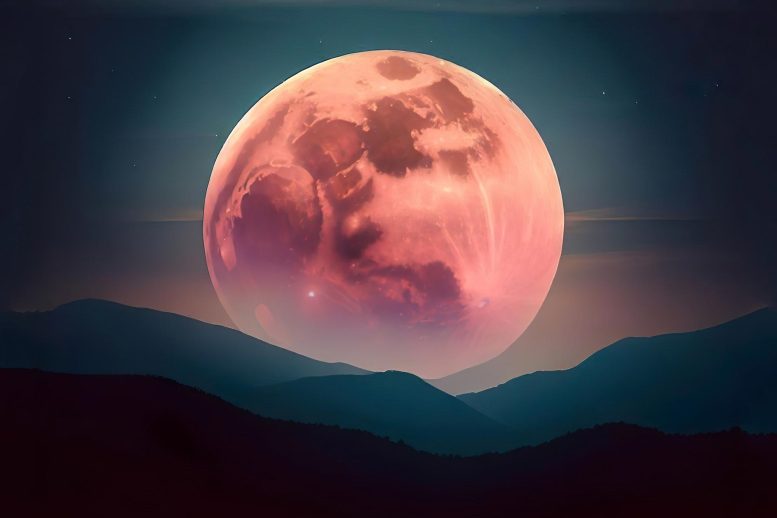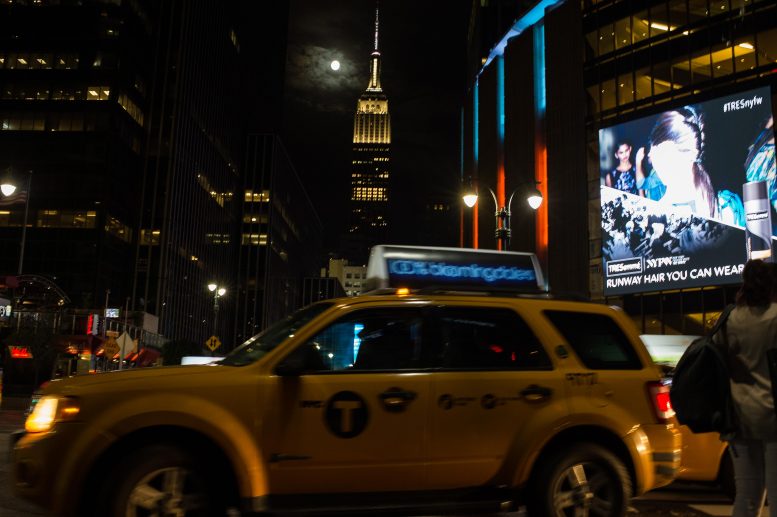Don’t Miss the Strawberry Moon in June’s Night Sky!
[ad_1]

The name “Strawberry Moon” isn’t from the color of the Moon, despite what you see in this artist’s illustration. It comes from the Algonquin tribes of North America, marking the time of year when wild strawberries are typically harvested.
The Next Full Moon is the Strawberry Moon; the Flower, Hot, Hoe, or Planting Moon; the Mead or Honey Moon; the Rose Moon; Vat Purnima; Poson Poya; and the LRO Moon.
On June 21, 2024, the full “Strawberry Moon” will be visible, marked by various cultural celebrations and celestial events detailed for specific locations like Washington, DC. Known historically as the Mead or Honey Moon, it has cultural significance in Hindu and Buddhist traditions, among others. The period also features astronomical highlights, including the visibility of planets and stars like 
A perigee full moon, or supermoon, is seen next to the Empire State Building in New York City. Credit: NASA/Joel Kowsky
An old European name for this full Moon is the Mead or Honey Moon. Mead is a drink created by fermenting honey mixed with water and sometimes fruits, spices, grains, or hops. In some countries Mead is also called Honey Wine (though in others Honey Wine is made differently). Some writings suggest the time around the end of June was when honey was ready for harvesting, which made this the “sweetest” Moon. The word “honeymoon” traces back to at least the 1500s in Europe. The tradition of calling the first month of marriage the “honeymoon” may be tied to this full Moon because of the custom of marrying in June or because the “Honey Moon” is the “sweetest” Moon of the year. There doesn’t appear to be enough evidence to support a 19th-century theory that the word entered English from the custom of gifting newlyweds mead for their first month of marriage.
Another European name for this full Moon is the Rose Moon. Some sources indicate “Rose Moon” comes from the roses that bloom this time of year. Others indicate that the name comes from the color of the full Moon. The orbit of the Moon around the Earth is in almost the same plane as the orbit of the Earth around the Sun (only about 5 degrees off). On the summer solstice the Sun appears highest in the sky for the year. Full Moons are opposite the Sun, so a full Moon near the summer solstice will be low in the sky. Particularly for Europe’s higher latitudes, when the full Moon is low it shines through more atmosphere, making it more likely to have a reddish color (for the same reasons that sunrises and sunsets are red). For the Washington, DC area, the full Moon on the night from the evening of June 21 to the morning of June 22 will have the lowest full Moon of the year, reaching only 21.9 degrees above the southern horizon at 1:20 AM EDT.
For Hindus this is Vat Purnima. During the 3 days of this full Moon married women will show their love for their husbands by tying a ceremonial thread around a banyan tree. The celebration is based on the legend of Savitri and Satyavan.
For Buddhists this full Moon is Poson Poya. The Poson holiday in Sri Lanka celebrates the introduction of Buddhism in 236 BCE.
Another tribe has also given a name to this full Moon. This tribe is now scattered but mostly lived in the mid-Atlantic region of the United States. This tribe’s language is primarily English, but with a liberal smattering of acronyms, arcane scientific and engineering terms, and Hawaiian phrases (cheerfully contributed by the former Deputy Project Manager). Comprised of people from all backgrounds, many of whom have gone on to join other tribes, this tribe was devoted to the study of the Moon. This tribe calls June’s full Moon the LRO Moon, in honor of the spacecraft they launched towards the Moon 15 years ago, on June 18, 2009. Don’t Miss the Strawberry Moon in June’s Night Sky!

Comments are closed.